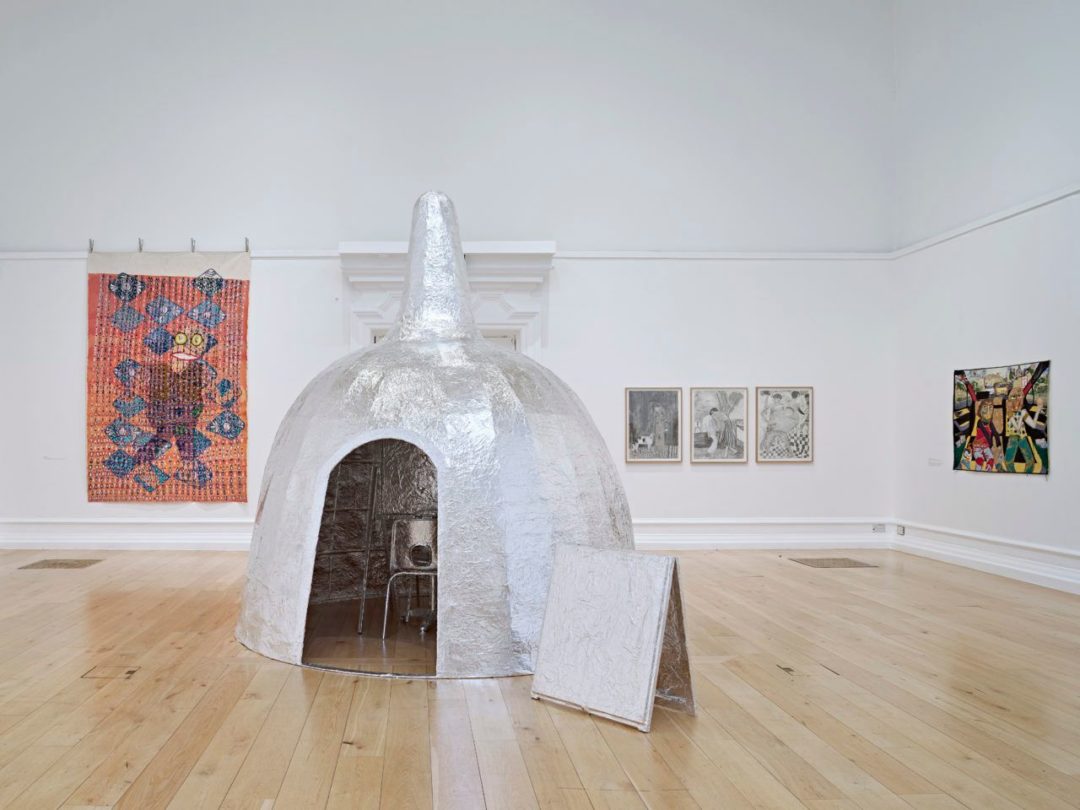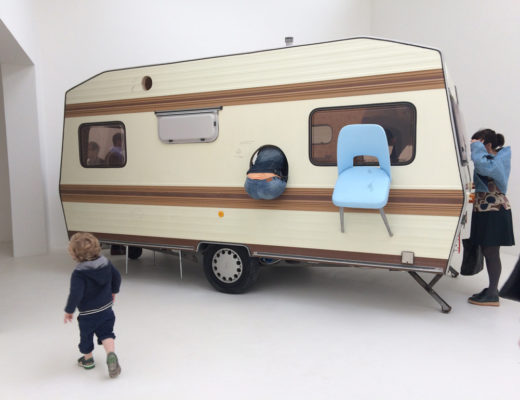It’s ten years since I last wrote about Bloomberg Contemporaries. Back then it was at the ICA; these days it’s at the South London Gallery for its fifth consecutive year. As usual, there is a wide range of work and not all of it is successful. This kind of exhibition, where each artist is represented by a single work, showcases certain practices better than others. Those able to produce self-contained stand-alone pieces are likely to shine brighter than dense, research-heavy works whose outputs might be diffuse or non-material.
New Contemporaries has a much stronger curatorial presence than it used to. Ranging across both South London Gallery buildings, the exhibition is divided into thematic sections: Portraiture of the Self and Others; Communication and Disconnection; Spirituality and Mysticism; Repurposing and Retro-futurism; and Reclaiming Spaces. This does help to make New Contemporaries feel more than just a random survey, but it also removes one of the joys of this kind of exhibition, which is tracing thematic connections yourself. Themes start to feel like trends and instead of feeling fresh and new the works feel a bit like they’re being slotted into pre-existing compartments.
According to the accompanying information, the 47 artists in the exhibition were selected from an open call submission of over 1,500 entries. The judges were artists James Richards, Veronica Ryan and Zadie Xa.
These are the works I found most memorable:
Francesca Dobbe, Perhaps it’s a Stomach Ulcer Due to Repressed Childhood Trauma (2020)
On the New Contemporaries website, Dobbe outlines her interest in slowness as an aesthetic strategy for addressing a “contemporary co-existence of times, comprised of many overlapping speeds, rhythms and periods”. This low-down installation includes a pair of old-fashioned public bathroom hand-dryers, one of which is wrapped in plastic to communicate perhaps that, sandwiched chronologically between the paper towel and the Brexit-powered Airblade, it is no longer modern and therefore no longer functional. Formally, the work reminds me of some Nicole Werners pieces, especially in the use of everyday, mass-produced objects involving a modicum of design consideration and a lot of plastic. Onto a wing-mirror and a sun-visor, where mirrors would be, Dobbe has projected footage of rippling fabric and what looks like a figure under cloth. Sterility seems to be undercut by bodies, movement and the accompanying suggestions of pain, dirt and decay.
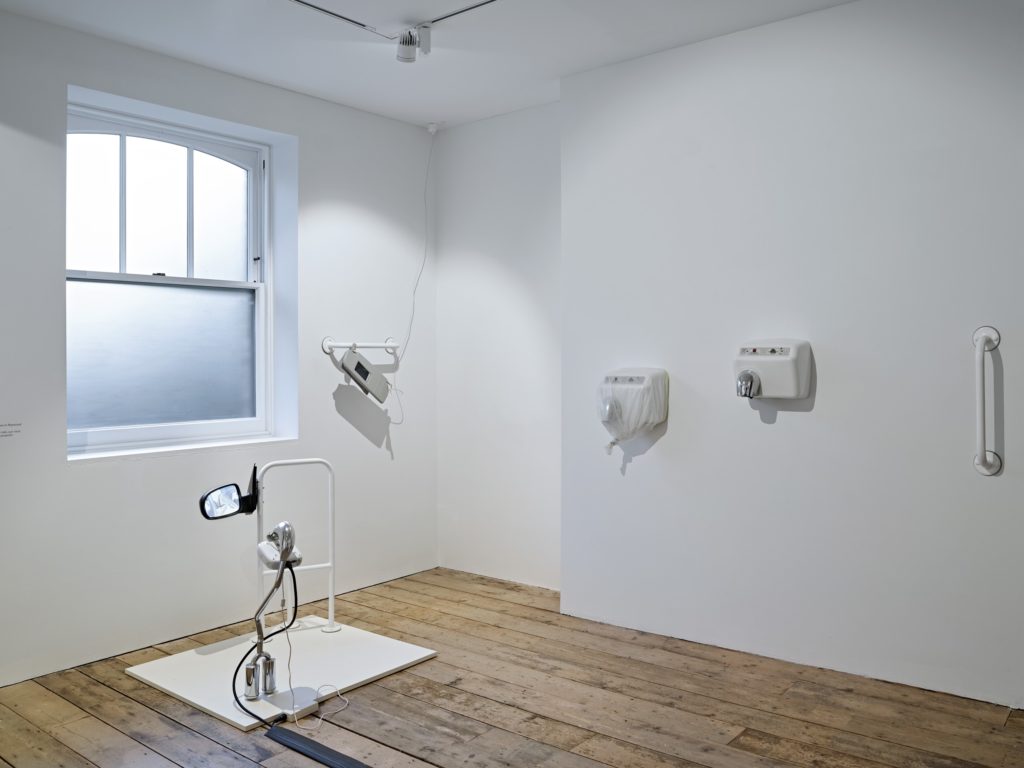
Hamish Halley, Nicky Tams (2021)
Hamish Halley’s ten-minute film is an affectionate, funny and multi-layered exploration of family, memory, place and tradition, rural labour, class, language (oral and written) and song. Nicky Tams is a song from around 1900 that references the straps or cords (taums) with which farm workers and servants tied their trousers just below the knee. Through conversations across generations and halting, half-remembered singing, interspersed with frying eggs, dyeing cloth, pruning trees and chainsawing logs, the film reconstructs the ballad and foregrounds its own process of doing so. It reminds me a little of Angelica Mesiti’s The Calling (2013-14) in its interest in how traditional means of communication and expression are threatened, lost and somehow sometimes kept alive through repetition, however faltering or performed.
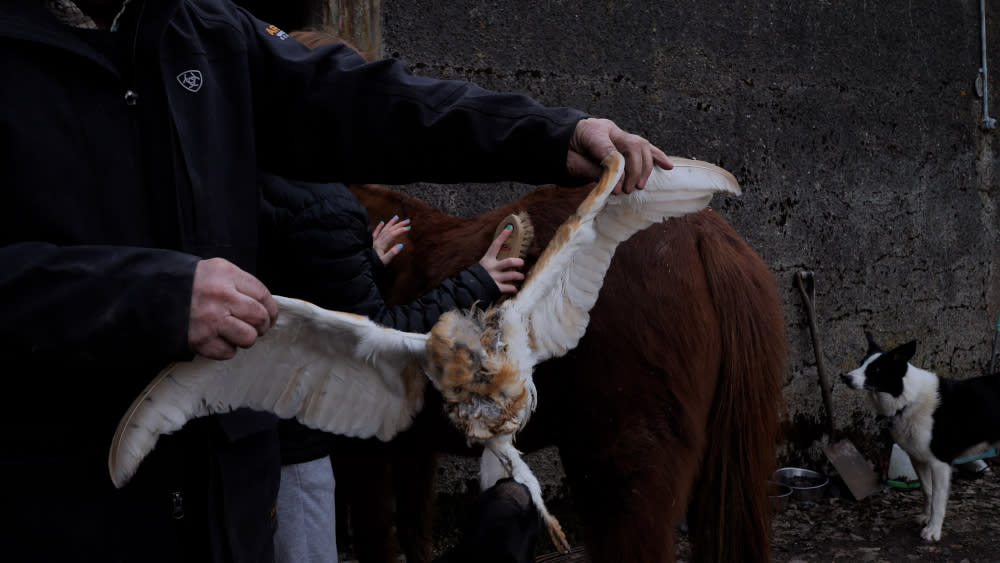
Gabriel Kidd, A Sight of Lavender Pungent (2021)
Kidd describes his way of working as “an expanded painting practice” and this installation is definitely expansive. Floor-based and comprising a whole plethora of emotionally charged bits and bobs – bones, books, lockets, pieces of wood – it reminds me inevitably of Dineo Seshee Bopape, but foregrounding queer sexuality over indigenous spirituality and knowledge practices. Objects recline together across an old patterned carpet, as domestic interior forms a kind of landscape, weaving in myth and literature with a sensual earthy groundedness. The tones are gorgeous – fey, faded, dusky; textures ranging across brittle and soft. Looking at Kidd’s other works online, I think I prefer it when the sexiness is a little more subtle (there’s a lot of cocks in this one).
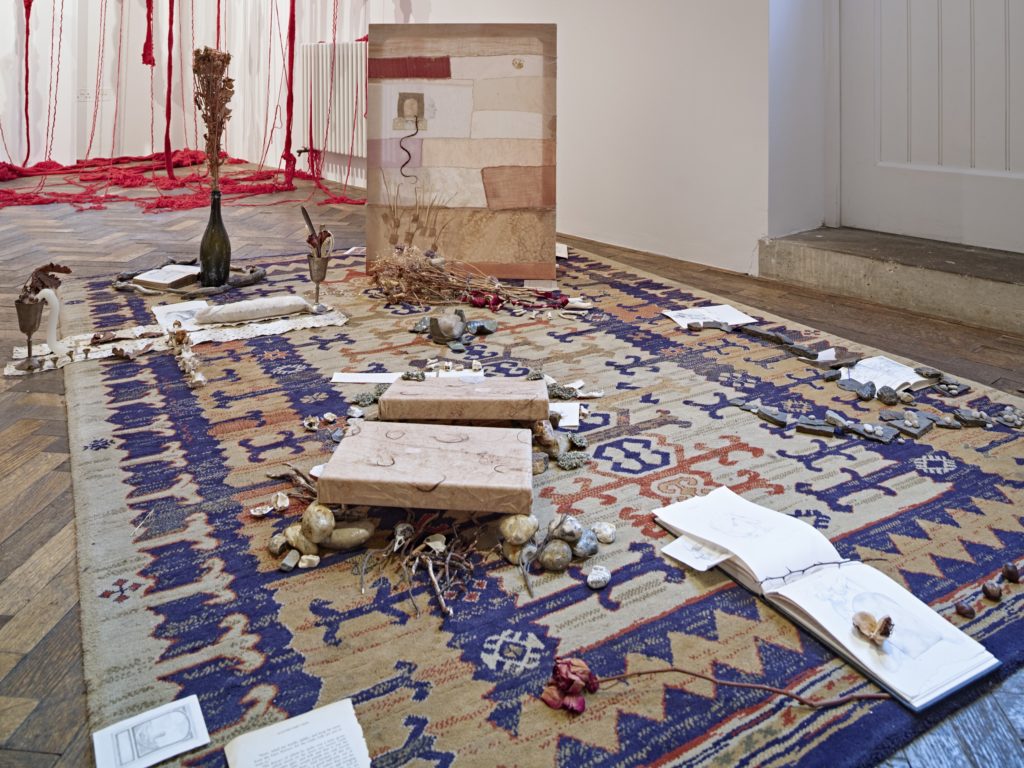
Akinsola Lawanson, Bosode (2021)
Akinsola Lawanson is a software developer as well as an artist and their work also includes kinetic sculptures and video game engines. Here, Lawanson is represented by Besode, a 27-minute film that brings Yoruba deities to London and – I think – some parts of the English countryside. The recurrence of water and use of shells for ritual practices is reminiscent of some of Alberta Whittle’s work, while the exploration of magic, spirituality and technology reminds me of Hello, Rain (2018), that brilliant short film by director C.J. Obasi, based on the story Hello, Moto (2011) by Nnedi Okorafor. Lawanson’s work also shares Hello, Rain’s unpredictable, electric charge. The text online describes the work as “an interactive film with several possible endings” although this narrative contingency does not come through clearly in the gallery.
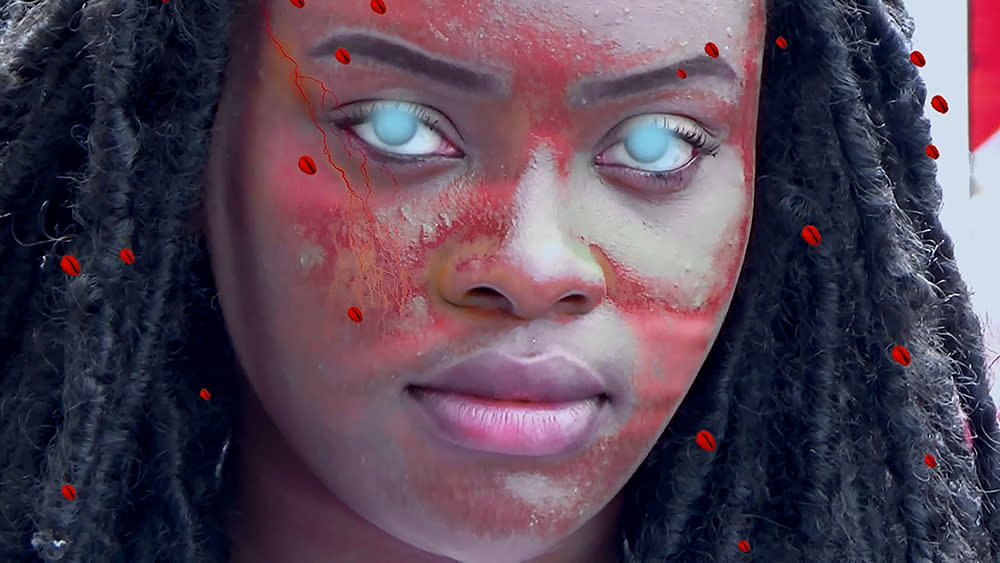
Beverley Onyangunga, Minors Mining (2020)
Beverley Onyangunga’s engagement with conflict minerals in the Democratic Republic of the Congo combines archival images of two children against a copper-brown sky and a landscape of arid extractivism. One carries a red plastic tub, the other is nearly buried under a load of plastic sacks. The titular pun on minors/miners is paralleled by a corresponding visual pun, in which a Sony television is used not to display film footage but as a picture frame. The sudden realisation that the work is not a moving image but a mixed media collage forces you, as a viewer, to stop and confront the ways in which contemporary media culture is materially implicated in child labour, sexual violence and civil war.
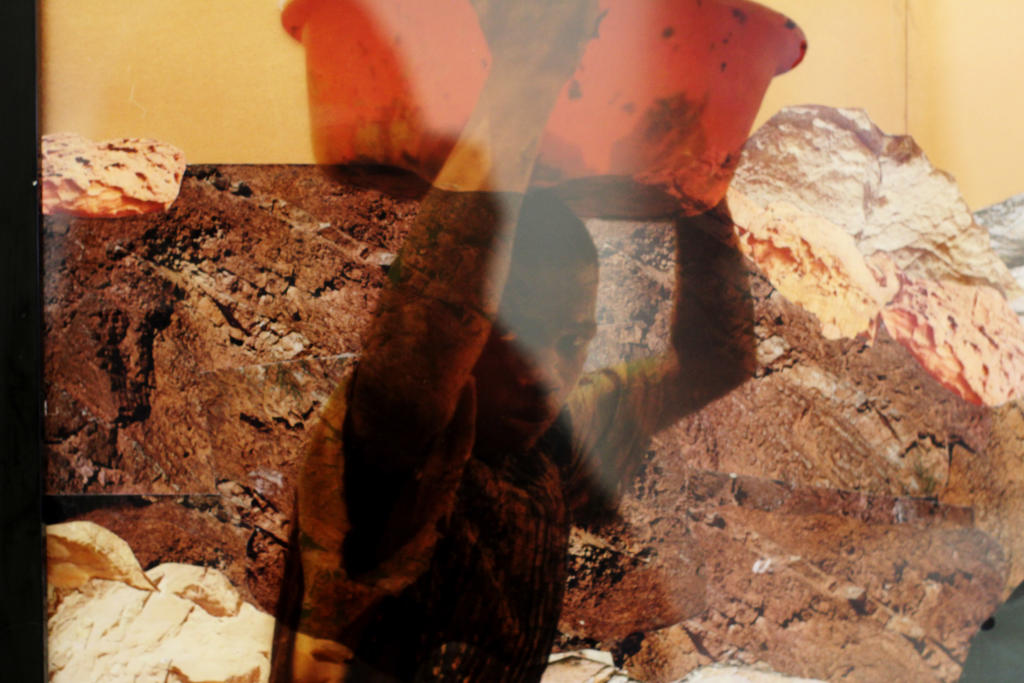
Bloomberg New Contemporaries is at South London Gallery until 12th March 2023.
Image credits from top:
1. Bloomberg New Contemporaries 2022. Installation photo by Andy Stagg.
2. Francesca Dobbe, Perhaps it’s a Stomach Ulcer Due to Repressed Childhood Trauma (2020). Bloomberg New Contemporaries 2022. Installation photo by Andy Stagg.
3. Hamish Halley, Nicky Tams (2021) moving image, still
4. Gabriel Kidd, A Sight of Lavender Pungent (2021). Bloomberg New Contemporaries 2022. Installation photo by Andy Stagg.
5. Akinsola Lawanson, Bosode (2021), moving image 27 min. 22 sec.
6. Beverley Onyangunga, Minors Mining (2020), mixed media collage, 50.8 x 81.28 cm

